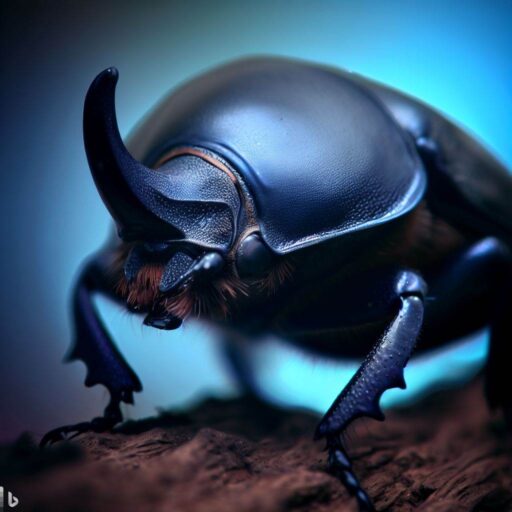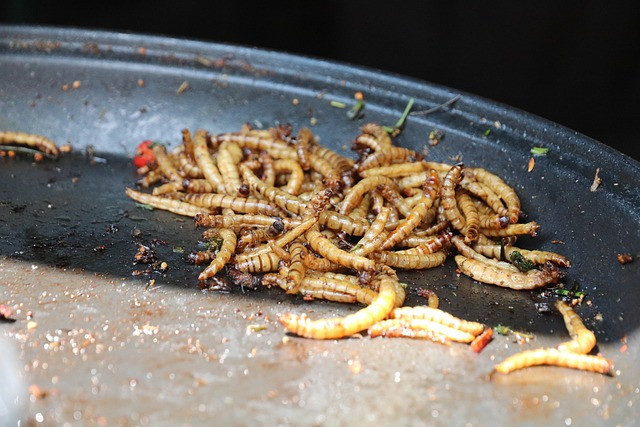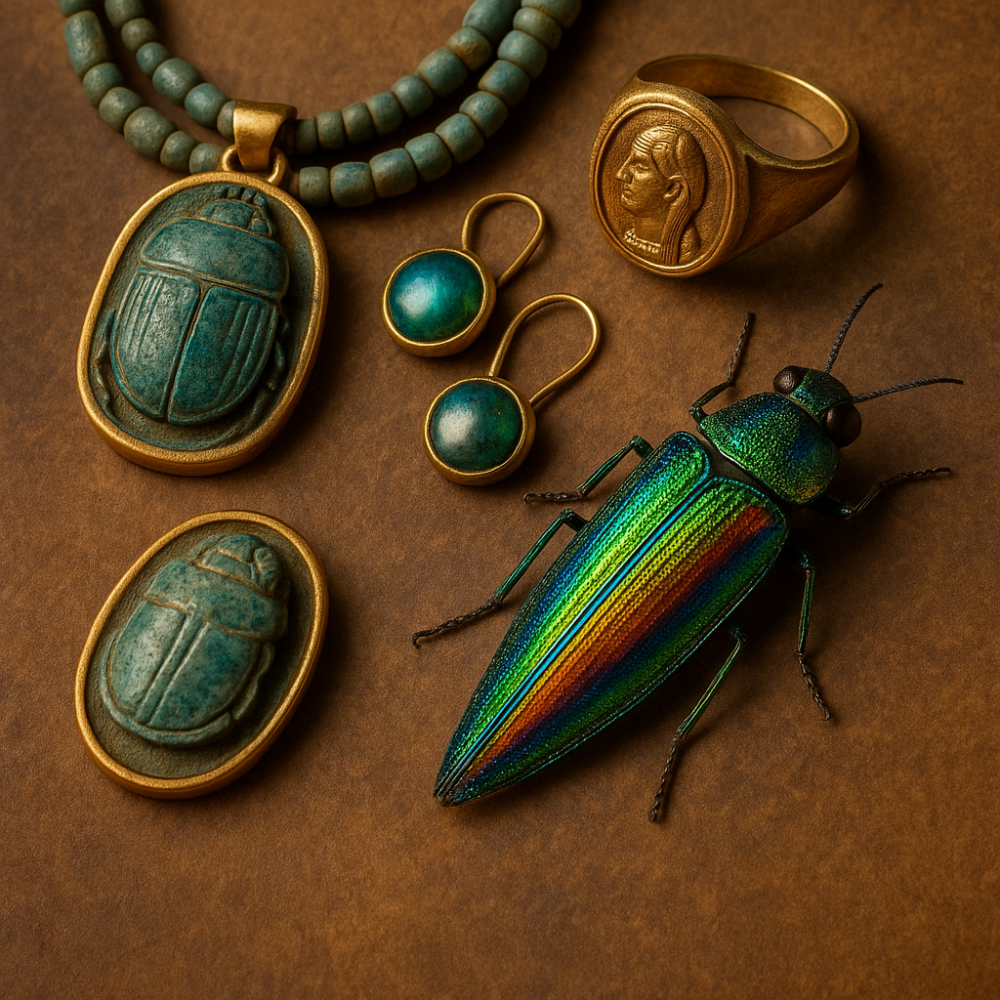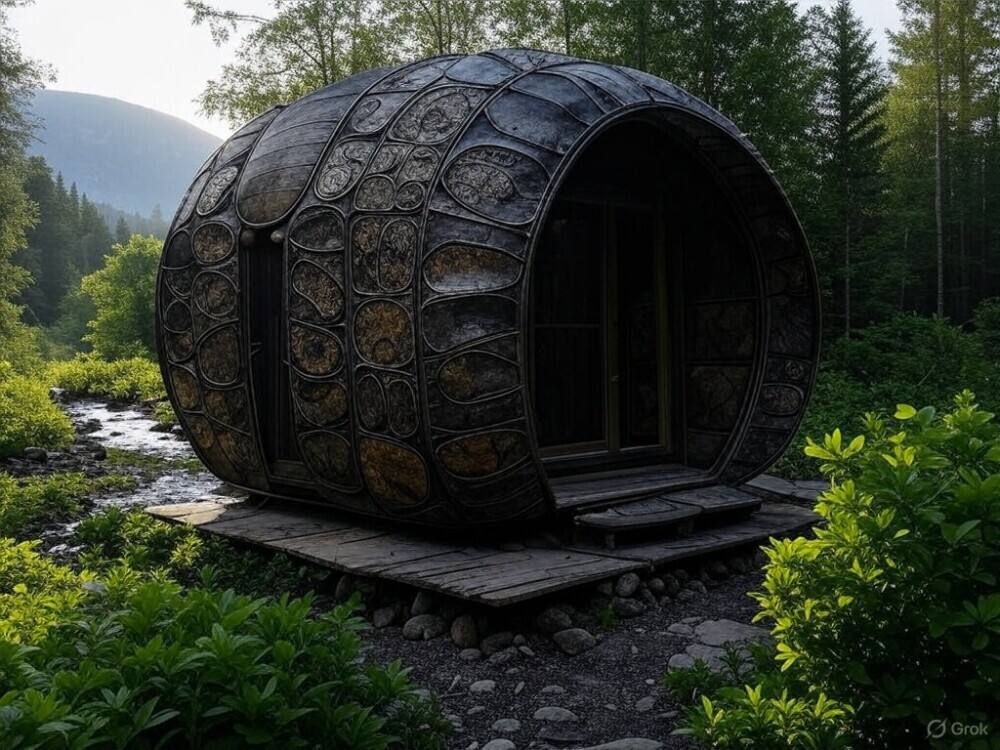Key Takeaways:
- Mealworms are the larval stage of darkling beetles and undergo a complete metamorphosis, transforming from egg to larva, pupa, and then adult beetle.
- To breed and raise mealworms successfully, provide them with appropriate bedding, a constant temperature, and a regular supply of food and water.
- Maintaining a healthy colony of mealworms requires regular cleaning, monitoring moisture levels, and separating life stages to prevent cannibalism and ensure optimal growth.
What are Mealworms?

Mealworms, known scientifically as Tenebrio molitor, are the larval form of darkling beetles.
These small, segmented creatures have a hard exoskeleton and are commonly used as bait in fishing or as feed for animals.
They have a distinct appearance, resembling small worms with a cylindrical body and a brown color.
While mealworms may not seem appealing to humans, they are a valuable source of nutrition for other animals and can be found in various habitats, including stored grain products and decaying plant material.
These resilient creatures have adapted to survive in different conditions and have a fascinating life cycle, transitioning from eggs to larvae, pupae, and finally into adult beetles.
The Life Cycle of Mealworms
Mealworms go through a fascinating life cycle that involves several stages of development.
They begin as eggs, which hatch into tiny larvae.
These larvae then undergo multiple molts, shedding their exoskeletons and growing larger each time.
After reaching their final larval stage, they transform into pupae, during which they undergo a metamorphosis.
Finally, they emerge as adult beetles. This life cycle showcases the incredible transformation and growth that mealworms go through to reach maturity.
How to Breed and Raise Mealworms

Mealworm breeding and raising can be achieved by following a straightforward process. Here is a 6-step guide to assist you in successfully breeding and raising mealworms.
- Finding a suitable breeding container: Select a container that is well-ventilated, dark, and spacious enough to accommodate your mealworms. Ensure the container has a lid to prevent the escape of mealworms.
- Setting up the bedding: Provide a suitable bedding material for the mealworms to live in. This can include oats, wheat bran, or a combination of both. Ensure the bedding is moist enough to maintain the right level of humidity.
- Introducing mealworms: Purchase a batch of healthy adult mealworms to start your breeding population. Gently place them in the bedding and provide them with a small amount of fresh vegetables or fruits as a food source.
- Maintaining optimal conditions: Keep the breeding container in a warm and dark location, preferably between 77-81°F (25-27°C). Regularly check the moisture levels in the bedding and adjust if necessary. Provide fresh food regularly to sustain the mealworms.
- Harvesting the mealworms: As the mealworms grow, they will undergo a molting process and eventually transform into pupae. Separate the pupae from the breeding container and place them in a separate container. After a few days, the pupae will transform into beetles. Transfer the beetles to a new container to avoid inbreeding.
- Continual care and reproduction: The adult beetles will lay eggs, which will hatch into mealworm larvae. Repeat the process by transferring the eggs to new bedding to ensure continuous breeding and raising of mealworms.
Unique details about breeding and raising mealworms include the importance of providing proper ventilation in the breeding container to ensure the well-being of the mealworms.
Additionally, maintaining a consistent temperature within the recommended range is crucial for successful breeding.
A fascinating piece of history related to breeding and raising mealworms is that the practice dates back centuries.
Mealworms have been used as a source of nutrition for domestic animals and even humans in various cultures around the world.
The process has evolved and become more refined over time, leading to the methods commonly used today in breeding and raising mealworms.
Maintaining Your Colony
Text: Maintaining Your Mealworm Colony: A Guide to Ensuring Optimal Conditions
To maintain the health and productivity of your mealworm colony, follow these guidelines:
- Providing a suitable habitat: Create a comfortable and clean environment for your mealworms, with proper bedding and appropriate moisture levels.
- Feeding and nutrition: Offer a balanced diet consisting of grains, fruits, and vegetables to meet their nutritional needs.
- Temperature and lighting: Maintain a consistent temperature and lighting schedule to promote growth and reproduction.
- Monitoring and pest control: Regularly inspect your colony for signs of disease or infestation, and take preventive measures to protect your mealworms.
In addition to these essential maintenance practices, it is important to handle your mealworms with care and ensure their well-being throughout their life cycle.
Ensure that you adhere to these guidelines to maximize the productivity of your mealworm colony.
Don’t miss out on the opportunity to enjoy a thriving and sustainable insect population.
Conclusion: Benefits of Raising Mealworms and Successfully Turning Them Into Feeders
Mealworms, the larvae of darkling beetles, undergo a fascinating metamorphosis.
They transform into pupae before finally emerging as adult beetles.
This transformation process is a natural and essential part of their life cycle.
The mealworm undergoes a complete metamorphosis, transitioning through distinct stages: egg, larva, pupa, and adult.
Through this process, mealworms undergo significant physical changes, including the development of wings and reproductive organs.
Understanding this transformation is crucial for successfully raising mealworms and utilizing them as feeders.
Raising mealworms and turning them into feeders may not only benefit your pets, but also serve as practice for any potential future entomology-themed horror films.
How do Mealworms Benefit the Environment
Mealworms, the larval stage of darkling beetles, may not be the first creatures that come to mind when considering environmental benefits.
However, these tiny, wriggly creatures actually play a significant role in promoting ecological balance and sustainability. In this section, we will delve into the various ways mealworms benefit the environment.
Nutrient Cycling
Mealworms are voracious decomposers, feeding on organic waste material such as discarded food scraps, dead leaves, and other decomposing matter.
By consuming this waste, mealworms help break down organic material and facilitate nutrient cycling in ecosystems. Their digestive processes convert these materials into rich organic matter, which, in turn, can be used to enrich soil and promote plant growth.
This natural recycling ability of mealworms reduces the volume of organic waste that would otherwise end up in landfills, contributing to a more sustainable waste management system.
Vermicomposting
Mealworms are also commonly used in vermicomposting, a process that employs worms to decompose organic waste into nutrient-rich compost.
The ability of mealworms to break down a wide variety of organic matter makes them valuable contributors to this environmentally friendly practice.
When mealworms consume kitchen scraps or other organic waste, they produce castings or worm manure, which is a nutrient-dense fertilizer.
This vermicompost can be used to enrich soil in gardens, farms, and urban agriculture, reducing the need for chemical fertilizers and promoting healthier plant growth.
Animal Feed Conversion
Mealworms have gained attention as a sustainable alternative in animal feed production.
Insects, including mealworms, have a remarkable ability to convert low-value organic materials into high-quality protein.
As a result, mealworms can be reared on agricultural by-products or food waste, reducing the demand for traditional feed sources like soy or fishmeal.
This reduces the environmental impact associated with conventional animal feed production, such as deforestation, over fishing, and greenhouse gas emissions.
By incorporating mealworms into animal feed, we can create a more sustainable and resource-efficient system, easing the strain on land and water resources.
Potential as a Food Source AKA Eating Mealworms
Mealworms are not only beneficial for the environment but also hold potential as a sustainable and nutritious food source for humans.
They are highly rich in protein, healthy fats, fiber, and essential nutrients like vitamins and minerals.
Cultivating mealworms for human consumption requires fewer resources, such as land and water, compared to conventional livestock production.
Embracing mealworms as part of our diet can help reduce the environmental impact associated with meat production and address food security challenges.
Mealworms may be small, but their environmental contributions are substantial.
From nutrient cycling and vermicomposting to their potential as a sustainable animal feed source and food for humans, mealworms demonstrate their ability to promote ecological balance and reduce our ecological footprint.
Incorporating these fascinating creatures into various aspects of our lives holds the promise of creating a more sustainable future for both the environment and ourselves.
What are the Risks Associated with Mealworms
While mealworms offer numerous environmental benefits, it is essential to consider the potential risks associated with their cultivation, handling, and consumption.
Understanding these risks is crucial for ensuring the safe and responsible use of mealworms.
In this section, we will explore some of the potential risks and considerations associated with mealworms.
Allergies and Sensitivities
Like any other food or organism, some individuals may have allergies or sensitivities to mealworms.
Allergic reactions can range from mild symptoms such as itching, redness, or swelling to more severe reactions like difficulty breathing or anaphylaxis.
It is important to exercise caution when handling mealworms, especially if you have known allergies or sensitivities to other insects or shellfish.
If you are unsure about your susceptibility to mealworm allergies, it is advisable to consult with a healthcare professional before coming into contact with them.
Contamination and Hygiene
Mealworms are often reared in controlled environments to minimize the risk of contamination.
However, improper handling or unhygienic conditions during their production or storage can lead to bacterial or fungal contamination.
This contamination can potentially pose health risks if mealworms are consumed without proper processing or cooking.
It is essential to ensure that mealworms intended for consumption are sourced from reputable suppliers who follow appropriate hygiene practices and adhere to food safety regulations.
Chemical Contaminants
Mealworms have the ability to accumulate chemical contaminants present in their environment.
If mealworms are raised in contaminated substrates or fed on contaminated feed, there is a risk of these contaminants transferring to the mealworms themselves.
Common chemical contaminants of concern include heavy metals, pesticides, and pollutants.
To mitigate this risk, it is important to source mealworms from reliable and regulated suppliers who ensure the safety of their rearing practices and feed sources.
Ethical Considerations
When considering the use of mealworms for various purposes, ethical considerations should be taken into account.
It is important to ensure that mealworms are treated with care and respect throughout their lifecycle.
This includes providing appropriate living conditions, minimizing stress, and avoiding unnecessary harm.
Additionally, transparency in labeling and sourcing practices is crucial to empower consumers to make informed choices aligned with their ethical values.
While mealworms offer numerous environmental benefits, it is essential to be aware of the potential risks associated with their use.
Allergies and sensitivities, contamination and hygiene, chemical contaminants, and ethical considerations are important factors to consider when cultivating, handling, or consuming mealworms.
By understanding and addressing these risks through proper sourcing, handling, and processing practices, we can ensure the safe and responsible utilization of mealworms while maximizing their positive environmental impact.
What are Lesser Mealworms
Lesser mealworms, scientifically known as Alphitobius diaperinus, are insects belonging to the darkling beetle family.
They are closely related to mealworms but are a different species.
Lesser mealworms share some similarities in appearance and behavior with mealworms but have distinct characteristics.
How do lesser mealworms differ from mealworms?
While both lesser mealworms and mealworms belong to the same family, there are a few key differences between them.
Lesser mealworms are smaller, typically measuring around 6 to 10 millimeters in length, whereas mealworms are larger, reaching about 25 millimeters in length.
Additionally, lesser mealworms have a more elongated and cylindrical body shape compared to the broader and more segmented body of mealworms.
Where are lesser mealworms found?
Lesser mealworms are widely distributed around the world and are commonly found in environments where organic matter and decaying materials are present.
They are often associated with poultry houses, farms, and agricultural settings.
Lesser mealworms thrive in warm, humid conditions and are attracted to areas with ample food sources, such as spilled feed or manure.
What do lesser mealworms eat?
Similar to mealworms, lesser mealworms are detritivores and feed on a variety of decaying organic matter.
They consume materials like animal droppings, decaying plants, dead insects, and decomposing waste.
In poultry houses, they are known to feed on spilled feed, feathers, and manure, making them a potential pest in such environments.
Are lesser mealworms harmful?
Lesser mealworms are generally not harmful to humans or animals when consumed accidentally.
However, they can become a nuisance and a potential pest in certain settings.
In poultry houses, large populations of lesser mealworms can lead to health and sanitation issues if not properly managed.
They can transmit diseases and contribute to the deterioration of poultry litter and feed quality.
How can lesser mealworm infestations be controlled?
To control lesser mealworm infestations, it is important to implement proper hygiene and sanitation measures.
Regular cleaning of poultry houses, removal of spilled feed, and adequate waste management can help reduce their population.
Additionally, insecticides and biological control agents may be used as part of an integrated pest management approach to manage and control lesser mealworm populations.
Can lesser mealworms be used for the same purposes as mealworms?
While lesser mealworms have similar characteristics to mealworms, they are not commonly used for the same purposes.
Mealworms (Tenebrio molitor) are more commonly utilized as a food source for animals and humans, in vermiculture, and as educational organisms.
Lesser mealworms, on the other hand, are primarily seen as pests in agricultural and poultry settings rather than being commercially reared or utilized in the same way as mealworms.
Note: It’s important to consult reliable sources or entomology experts for specific and up-to-date information about lesser mealworms, as knowledge and research on these insects may continue to evolve.
What is an Albino Mealworm or White Mealworms
Albino mealworms, also known as white mealworms, are a genetic variation of the common mealworm (Tenebrio molitor).
Unlike the typical dark brown coloration of regular mealworms, albino mealworms lack pigmentation, resulting in a pale or white appearance.
This lack of pigmentation is a result of a recessive gene that affects the production of melanin, the pigment responsible for coloration in insects.
Are albino mealworms different from regular mealworms?
Albino mealworms are essentially the same species as regular mealworms (Tenebrio molitor) but with a distinct genetic variation.
The primary difference is their appearance due to the absence of melanin pigmentation.
Aside from their color, albino mealworms exhibit similar behaviors, life cycle stages, and ecological characteristics as regular mealworms.
How are albino mealworms produced?
Albino mealworms are typically bred through selective breeding programs.
Breeders selectively choose mealworms that display the albino genetic trait and breed them to produce subsequent generations of albino offspring.
This process helps maintain and propagate the recessive albino gene in mealworm populations.
Can albino mealworms be used as regular mealworms?
Yes, albino mealworms can be used similarly to regular mealworms.
They possess the same nutritional composition and can serve as a food source for various animals, such as reptiles, birds, and small mammals.
Additionally, albino mealworms can be utilized in vermiculture (the process of using worms for composting) and educational settings.
Are albino mealworms commercially available?
Yes, albino mealworms are commercially available through various suppliers and pet stores that specialize in live food for reptiles and other animals.
They are often sold as a food source for pets or for educational purposes.
Are there any differences in care for albino mealworms?
The care requirements for albino mealworms are generally the same as those for regular mealworms.
They require a suitable substrate for burrowing, a consistent supply of food (such as grains, fruits, or vegetables), and proper temperature and humidity conditions.
It is important to provide adequate ventilation and ensure a clean environment to prevent the buildup of waste and moisture.
Can albino mealworms be bred with regular mealworms?
Yes, albino mealworms can be bred with regular mealworms.
When breeding albino mealworms with regular individuals, the offspring will inherit genetic traits from both parents.
The resulting progeny will likely include a mix of albino and non-albino mealworms, depending on the specific genetic makeup and breeding patterns.
Note: For detailed information on breeding albino mealworms, it is advisable to consult specialized literature or seek guidance from experienced breeders or entomologists.
Mealworms Eat Styrofoam

Mealworms have the ability to consume and digest certain types of polystyrene, including expanded polystyrene foam, commonly known as Styrofoam.
This remarkable characteristic has attracted interest from researchers and scientists as a potential solution for plastic waste reduction.
Studies have shown that mealworms can break down Styrofoam by chewing and ingesting it.
The mealworm’s gut contains specific microorganisms that help in the digestion of the polystyrene, breaking it down into smaller components.
The resulting waste material, or frass, is excreted by the mealworms and has been found to have a reduced volume and altered chemical composition compared to the original Styrofoam.
However, it is important to note that while mealworms can consume Styrofoam, this does not mean they can fully metabolize or eliminate its harmful components.
Some of the byproducts of Styrofoam digestion by mealworms are still being studied to determine their long-term effects and potential environmental impacts.
Furthermore, the use of mealworms as a means to manage Styrofoam waste is still in the research and development stage.
It is not currently a widely implemented or scalable solution.
Additional research is necessary to understand the feasibility, efficiency, and potential drawbacks associated with using mealworms to address Styrofoam waste on a larger scale.
It’s important to note that mealworms should not be released into the environment as a means of Styrofoam disposal.
Controlled laboratory settings or specialized facilities are necessary to ensure proper containment and management of mealworms and their waste.
Resources for Further Learning and Support
Text: Learning and Support for Understanding Mealworm Transformation
- Research studies and scientific articles provide valuable resources for further learning and support about the life cycle and metamorphosis of mealworms.
- Online educational platforms offer courses and videos that delve into the details of mealworm transformation, providing interactive learning experiences.
- Engaging with entomology experts, either through online forums or in-person workshops, can offer personalized guidance and support for understanding mealworms’ development stages and transformation process.
Additionally, exploring educational books or journals focusing on entomology can provide unique insights into the remarkable journey of mealworms.
An entomologist, Dr. Turner, recounts a fascinating encounter with a group of school students who eagerly observed the transformation of mealworms into beetles in their classroom.
This hands-on experience sparked their curiosity, and they embarked on their own research projects, ultimately presenting their findings at a science fair, inspiring others to learn and explore the wonders of mealworm metamorphosis.
Five Facts About What Mealworms Turn Into:
- ✅ Mealworms turn into darkling beetles.
- ✅ Mealworms go through several stages of development before becoming adult beetles.
- ✅ The life cycle of mealworms typically lasts about 3 months.
- ✅ Mealworm larvae are commonly used as feeders for animals.
- ✅ Maintaining a colony of mealworms requires regular attention and care.
FAQ
1. What do mealworms turn into?
Mealworms turn into darkling beetles. The larvae stage of the darkling beetle is commonly known as mealworms.
2. Is breeding and raising live mealworms time-consuming?
Yes, breeding and raising live mealworms is a time-consuming endeavor. It requires regular attention and care to ensure their proper growth and development.
3. How can breeding mealworms save money?
Breeding mealworms can save a great deal of money compared to purchasing them multiple times per year from local feed stores or online retailers. Having a consistent supply of homegrown mealworms can be cost-effective in the long term.
4. Do mealworms have a higher yield when they are homegrown?
Yes, mealworms are more likely to have a higher yield when they are homegrown. By providing optimal conditions and care, you can increase the productivity and longevity of your mealworm colony.
5. Can mealworms be purchased online or from a local feed store?
Yes, mealworms can be purchased from both online retailers and local feed stores. However, breeding your own colony can be a more sustainable and cost-effective option in the long run.
6. What is included in a mealworm breeder kit?
A mealworm breeder kit typically includes all the necessary items to kickstart your colony, such as a breeder box, bedding, live mealworms, and instructions. It provides a convenient way to begin your own mealworm breeding process.





Leave a Reply